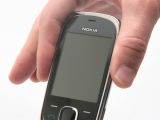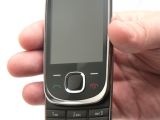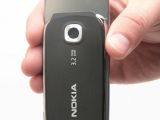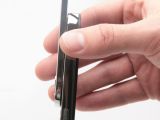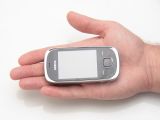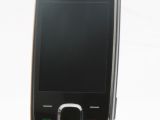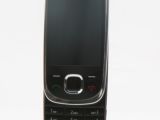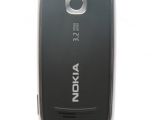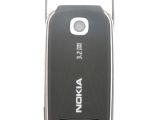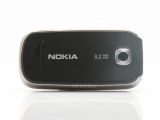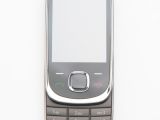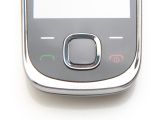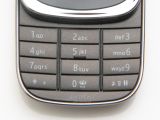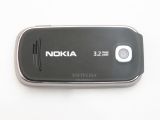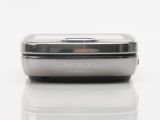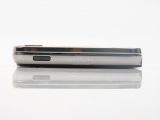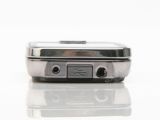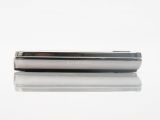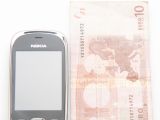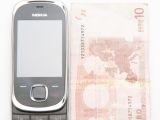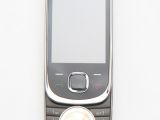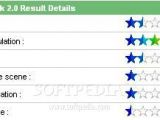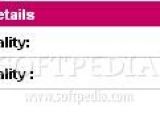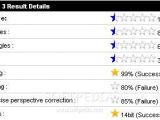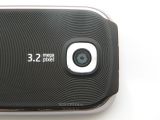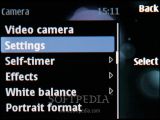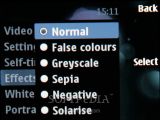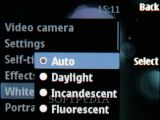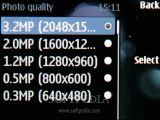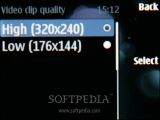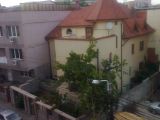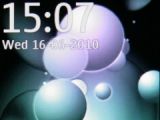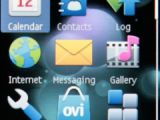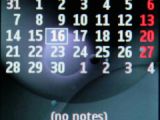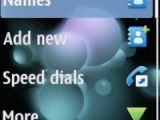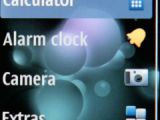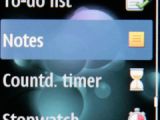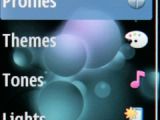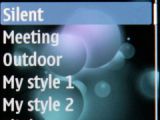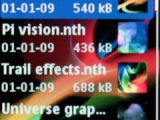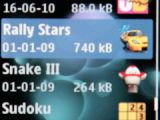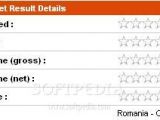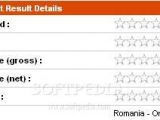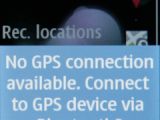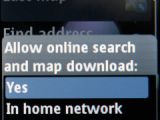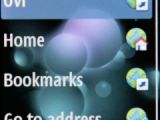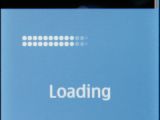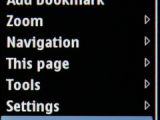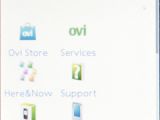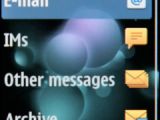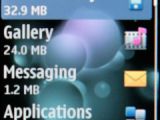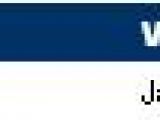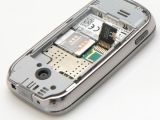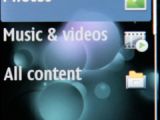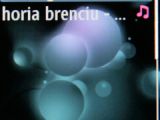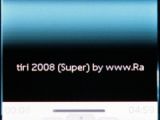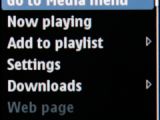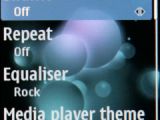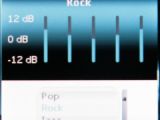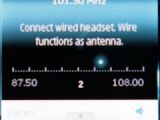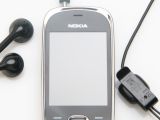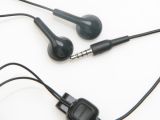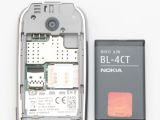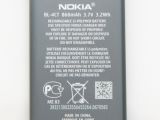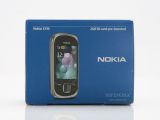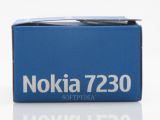Nokia 7230 is one of those handsets targeting the emerging market, which means it was especially designed as a cheap communication solution. The slider is one of the few handsets that have been destined to run Nokia Life Tools application, depending on the location, of course. What is really worth mentioning about this phone is the fact that it features 3G technology, even though the phone is offered as a mid-budget handset.
Basically, if you're looking for a cheap device and you don't need other fancy features like a good camera, HSDPA connectivity, nice music playback, exquisite design, then Nokia 7230 is the perfect solution. Further, the phone benefits from worldwide localization, thanks to its quad-band compatibility. There's also an American version available, which makes the slider compatible with UMTS 850 / 1900 / 2100 networks.
Announced in November 2009, Nokia 7230 slider was launched on the market in February 2010 and can be bought for about USD130 without subscription. Potential customers can choose from two available colors: Graphite and Hot Pink.
style="color: rgb(170,51,51)">Design
Nokia 7230 looks like an ordinary slider, but it features a nice mix of materials. The metallic part surrounding it adds more security to the device, while the stylish plastic on the front makes it more appealing. The battery cover features a circle pattern, which improves the user's grip over the phone. Opposite to what I thought when I first saw the device, you won't have to worry about fingertips too much. The 2.4-inch display can be tagged as medium-sized and is protected against scratches. Below the screen, there's a D-pad surrounded by a metallic stripe and four standard keys. The two soft keys are a little bit hard to push, while the D-pad is working pretty nice.
The right side of the slider features a dedicated camera button. The rest of the ports have been placed on top of the phone: 3.5mm jack port, microUSB port and a small charging port. The 3.2 megapixel camera has been placed on the back side of the phone and lacks any flash capabilities. It has been covered by a thin plastic glass to protect the lenses and surrounded by a metallic stripe. At the base of the back cover, there's also a small loudspeaker. The phone measures 98 x 48 x 14.8 mm and weighs exactly 100g (including battery), which puts it in the middle class for size. The keypad's layout looks pretty well, though offering maximum ergonomics. Buttons are well spaced and easy to click. The backlighting is very good and even on the whole keypad, so you won't have any troubles using the device in darker areas. The sliding mechanism is also pretty solid and works like a charm, thus smoothing the phone's handling. Overall, Nokia 7230 doesn't stand out from the crowd, but as a mid-budget device, it looks pretty nice. Thanks to the metallic side, it will also last longer than the standard devices in its price range.style="color: rgb(255,102,0)">Display and Camera
The slider embeds a 2.42-inch TFT display that supports 262K colors and a 240x320-pixel resolution. As the device is a mid-budget phone, the size of the screen doesn't bother too much, but if you want to take advantage of the full Internet browsing capabilities, it may look a little bit too small. The colors, contrast, as well as the quality of the image displayed are pretty standard for a Nokia phone, which means they are very good. While sunlight eligibility is not perfect, you will be able to use your phone outdoors successfully.
[admark=1]The 3.2-megapixel camera included in the Nokia 7230 lacks any flash capabilities and autofocus. The module camera has a CMOS sensor and a 4x digital zoom, which is not enough for high quality pictures. The maximum resolution that can be used for pictures is of 2,048x1,536 pixels, while clips can be recorded with a maximum resolution of 320x240 pixels at 8fps, and can be saved in H.263, MPEG-4 formats. In terms of picture quality, the camera underperforms pretty much with every photo, regardless of the light conditions. The pictures look much like those made with a VGA or 1.3 megapixel camera. Even though the slider features a dedicated camera button, the big D-pad can also be used as shutter. The camera interface is standard with the usual options: Effects, White balance, Landscape, Self-timer. Overall, the 3.2-megapixel camera has a poor performance, even for a mid-budget handset, so I would not suggest buying the phone if you're looking for a mediocre camera phone.style="color: rgb(153,204,0)">Menu and Software
Nokia 7230 runs on an S40 6th Edition interface, which is the latest user interface coming from Nokia. One of the most user-friendly interfaces on the market, the S40 seems unchanged on the surface, and offers the user an excellent experience. Still, there are some tweaks and reshapes, which are taking this experience to a new level. The icons of the menus have been changed, but the 3D animation has been taken off.
The firmware includes the Flash Lite player 3.0, and MMS version 1.3. Message support has been also improved to accept 600KB attachments. There is better support for WMA and WMV codecs, the most important improvement embedded in the S40 6th Edition interface of the new web browser. It now includes the Web-kit-based browser that was ported from the Symbian smartphones, but you can also use the embedded Opera Mini browser, which can be found in the Apps/Extras/Collection menu. The slider has some useful applications, such as Search, Alarm clock, Converter, Calendar, To-do list, Notes, Calculator, Countdown timer, Size converter, World Clock and Stopwatch. The menu is fully customizable and you can designate any MP3, MIDI or AAC file as a ringtone. The phonebook can store up to 2,000 contacts. The fonts can be customized, but only those displayed when opening the Contacts, Web browser and messaging sections. Also, some Java games come preinstalled – Bounce Tales, Rally Stars, Sudoku and Snake III. The phone is compatible with Java MIDP 2.1 applications, but there is a limit to the size of any application that you might want to install on it, and that's the usual 1MB. This might be the case with most Java-compatible applications.style="color: rgb(153,51,102)">Communication
The mid-budget slider is fully compatible with GPRS and EDGE Class 32, as well as the 3G networks. Benchmarks revealed that the device underperformed when it came to data-transfer speeds (EDGE 107 Kbit/s download and 77 Kbit/s upload; 3G only 342 Kbit/s download and 279 Kbit/s upload), but that may greatly vary depending on location and carrier.
The phone also features Bluetooth 2.1 and microUSB 2.0. Synchronization with the PC is possible through the proprietary microUSB port, and charging is also possible through the USB cable. The phone also includes the free navigation feature and Ovi Maps, but does not have a built-in GPS receiver. The included browser works pretty fast and smooth, but does not load pages rich in graphics. I have tried a few websites larger in size and I got the 'Memory full' error message. In terms of messaging, the slider accepts standard text messages, MMS 1.3 (600 KB attachments), as well as emails. The Nokia message client 2.0 works with POP3, SMTP, and IMAP4 protocols, and supports more than one email account. The quad-band (GSM 850 / GSM 900 / GSM 1800 / GSM 1900) network-compatible slider has a good GSM signal reception, as well as 3G, but the latter will drain your battery faster. The sound is very good in quality at both ends, and pretty loud. The vibration alert is average, which means you won't miss too many phone calls if you keep it on the Silent profile.style="color: rgb(170,51,51)">Processor and Memory
Nokia 7230 slider phone is powered by an ARM11 family processor running at speeds of up to 369 MHz. While not the fastest phone on the market, the handset features the same CPU that was usually embedded in some of the best Nseries smartphones a few years back. The slider does not lag even when running a music player or radio in the background.
The 7230 embeds 45 MB of user free internal memory, 128 MB NAND Memory, 64 MB SDRAM. The storage space can be expanded up to 16GB, thanks to its included microSD card slot. Unfortunately, the memory is NOT hot-swappable, as you will need to pull out the back cover and the battery to access the microSD card slot. The sales package also contains a 2GB microSD memory card.style="color: rgb(255,102,0)">Multimedia
It is clear that the device hasn't been made to be used as an MP3 player. Even if it features a 3.5mm audio jack port, the quality of the sound doesn't recommend it as a music phone. The included Nokia Stereo Headset WH-102 is mediocre and needs to be changed in case you want a better performance. The integrated MP3 player's interface seems pretty old and basic and features settings such as: Equalizer, Stereo widening, Shuffle and Repeat. The Equalizer can be customized, or you can use the predefined settings: Normal, Pop, Rock, Jazz and Classical. The mobile phone is compatible with MP3, AAC, AAC+, eAAC+ and WMA formats.
The lack of music-dedicated external keys can be replaced by a Bluetooth headset, as the phone supports the A2DP profile. The loudspeaker on the back sounds pretty low. There's also an FM radio with the RDS function that can replace the music player. The video player included is compatible with 3GPP formats (H.263), H.264/AVC, MPEG-4 and WMV 9, but can also run YouTube clips in full screen mode, thanks to the included YouTube client. Overall, I think Nokia 7230 is a no go, when it comes to multimedia features.style="color: rgb(153,204,0)">Battery
The 860 mAh Li-Ion (BL-4C) battery has an officially stated life expectancy of 360 hours (384 hours on 3G) in standby and of about five hours and 20 minutes (three hours and 40 minutes on 3G) in talk-time mode. Also, Nokia stated that the battery had a 27-hour autonomy when used only as an MP3 player. Unfortunately, after one week of testing it, I only got a little below of three hours of talking, while I was keeping the phone only on GSM network. This means you will need to recharge the slider once every two days approximately.
style="color: rgb(153,51,102)">Impressions
I didn't expect too much from this device in terms of performance, but taking into consideration its low price, in the end I was pretty satisfied with what it has to offer. Nokia 7230 doesn't look like a cheap phone; on the contrary, it's a stylish slider that will make a nice addition to any buyer. In case you're looking for a basic phone that also has some goodies to offer, then Nokia 7230 is probably your best option.
The Good
The Bad
style="color: rgb(170,51,51)">Sales Package
Nokia 7230 handset Nokia Stereo Headset WH-102 Nokia 2 GB microSD Card MU-37 Nokia Compact Charger AC-3 Nokia Battery BL-4CT User guide
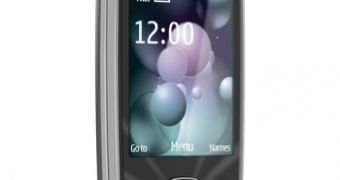
 14 DAY TRIAL //
14 DAY TRIAL // 
